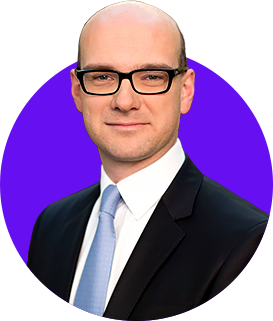Luxembourg investment funds reform: a comprehensive analysis
On 14 July 2023, Luxembourg's parliament approved Law No. 8183 (“the Law”), significantly modernizing the country's investment funds framework. Proposed on 24 March 2023, this reform is set to revolutionize Luxembourg's financial sector and the European investment landscape, by reinforcing Luxembourg's position as a leading hub for alternative investment funds within the European Union.
Background
The investment fund industry is ever-evolving, with global financial centers vying to attract investors and managers. Therefore, Luxembourg’s robust financial sector must constantly adapt and innovate to maintain its leading position.
The Luxembourg government recognizes investment funds’ pivotal role in meeting the EU’s long-term investment needs. By enacting this reform, they intend to cater to alternative investment fund managers’ (AIFMs) growing interest in products governed under Part II of the Luxembourg Law of 17 December 2010 on undertakings for collective investment (UCI Law) concerning the adoption of European Long Term Investment Funds (ELTIFs).
The Law’s most essential legal and tax changes
Legal forms
The reform introduces flexibility by expanding the legal forms available to Part II funds under the UCI Law. Previously restricted to public limited companies, these funds can now adopt various legal structures, including partnerships limited by shares (SCAs), common limited partnerships (SCSs), special limited partnerships (SCSps), and private limited companies (S.à r.l.s).
Alternative asset valuation
Part II funds can now use alternative asset valuation methods, provided they are explicitly outlined in the fund's constitutive documents. This change equips fund managers with a broader spectrum of options to determine asset values, potentially leading to more precise financial health assessments.
Share issuance
The reform also adapts share issuance practices, particularly for closed-ended Part II funds. Previously constrained to issuing shares at prices tied to the net asset value (NAV), these funds can now issue shares at prices that may deviate from NAV. This streamlines the share issuance process, which is especially beneficial for listed funds, as it allows them to issue shares at fixed prices or prices determined by the market listing. It also aligns fund practices with market norms and requirements, simplifying operations.
“Well-informed investor” definition
The revision of the "well-informed investor" definition is also a noteworthy change. The reform reduces the investment threshold for non-professional or non-institutional investors from EUR125,000 to EUR100,000, aligning with the EU’s "professional investor" criteria.
Minimum capital timeframe
In addition, the Law extends the timeframe for which certain funds must constitute their minimum capital. This period has been increased from 12 to 24 months for investment companies in risk capital (SICARs), specialized investment funds (SIFs), and reserved alternative investment funds (RAIFs), and from six to 12 months for Part II UCI funds.
These extensions recognize the financial markets’ dynamic nature by aligning regulations with practical market conditions, giving fund managers greater flexibility to accumulate the necessary capital.
Subscription tax modernization
The Law imposes three significant changes to the subscription tax system to support the development of new European fund products by:
- removing the requirement for money market funds to have a maximum portfolio duration of 90 days to qualify for a tax exemption
- introducing a tax exemption for European long-term investment funds (ELTIFs) as per Regulation (EU) 2015/760 and
- establishing a tax exemption for savers using pan-European personal pension products (PEPPs) in accordance with Regulation (EU) 2019/1238.
These aim to modernize the tax system and promote the growth of these fund products in Europe.
AIFMs and alternative investment funds (AIFs)
The Law adapts the appointment of tied agents for AIFMs, aligning their legal framework with undertakings for collective investment in transferable securities (UCITS) management companies. It also clarifies the marketing of certain AIFs to retail investors, specifying the conditions for ELTIFs, European Social Entrepreneurship Funds (EuSEF) and European Venture Capital Funds (EuVECA).
Additionally, while RAIFs can capitalize on the provision allowing SICARs and SIFs to be marketed to retail investors that qualify as well-informed investors, other Luxembourg AIFs not supervised by the CSSF cannot take advantage, highlighting differences in regulatory treatment within the Luxembourg AIF market.
Non-judicial liquidation and supervisory commissioner systems
The non-judicial liquidation system, initially limited to collective investment entities under the UCI Law, is now expanded to management companies and managers. This extension promotes regulatory uniformity and streamlines the treatment of various fund-related entities. The Law also introduces changes to the supervisory commissioner system, for example, when an entity overseen by the CSSF removes itself from the official list.
UCITS and Chapter 16 management companies
A key measure of the Law requires management companies to invest their mandatory capital in easily convertible assets to ensure financial stability and safeguard investor interests. Additionally, Chapter 16 management companies (excluding AIFMs) must maintain a minimum share capital of EUR125,000 or an amount set by CSSF regulations, with oversight from CSSSF and needs for rectification if it falls below the minimum.
Moreover, these management companies must now fulfill specific regulatory duties geared toward prioritizing investor interests and market integrity. These include acting fairly, employing due diligence, avoiding conflicts of interest, and complying with all regulatory obligations.
RAIFs
The reform simplifies the RAIF setup and registration process, with notarial confirmation no longer needed when an RAIF is set up through a notarial deed. Additionally, any modifications to the information in an RAIF's registration on the official list must be communicated to the Luxembourg Trade and Companies Register (RCS) within 20 working days of the modification's effect.
Conclusion
The Law’s enactment represents a significant milestone in the evolution of Luxembourg's investment fund industry. This comprehensive reform addresses the market’s evolving needs while simplifying regulations to boost Luxembourg's appeal to fund initiators and investors.
With these changes in place, Luxembourg is well-positioned to thrive in the competitive landscape of the investment fund industry, meeting the long-term investment needs of the European Union and beyond.
AIFMD 2 - Providing a new framework for loan-originating funds
The EU currently lacks a common framework for loan-originating funds. With some countries implementing national regimes for alternative investment funds (AIFs) to originate loans, fund managers face a patchwork of requirements when overseeing cross-border funds.
In August 2020, the European Securities and Markets Authority (ESMA) issued a letter to the European Commission advocating for a specific loan origination framework in the Alternative Investment Fund Managers Directive (AIFMD), given the potential role of debt funds in a post-COVID environment. The European Commission took stock of ESMA’s views, and the proposed AIFMD 2 introduces a new framework with common minimal rules for loan-originating AIFs.
The key features of the European Commission’s proposal include:
- The requirements for annually reviewed policies and procedures for granting credit, assessing credit risks, and administrating and monitoring loan portfolios.
- The limits on loans to one single borrower (20%) that apply from the date set in the prospectus until the fund starts to sell or redeem after the end of its life. This may be suspended for up to 12 months if the AIF raises additional capital.
- A 5% retention requirement on originated loans.
- A closed-ended AIF being mandatory when the AIF engages in significant loan origination that exceeds 60% of the AIF's net asset value.
- A ban on lending to the AIFM's staff, depositary and delegates.
The main topics covered in the Parliament and the Council’s trialogue discussions were:
- definitions of loan origination and loan originating funds
- details on the application of the risk retention requirement
- the determination of the leverage cap and
- Exemption of the loan originating fund requirements for shareholder loans, upon fulfilment of certain conditions.
The Parliament and the Council have seemingly reached an agreement on most of these topics. However, the outcome will only be known when specific technical issues are finalized, after which the final agreement’s text will be available to the public.
Given the usual length of the legislative process, it’s expected the AIFMD 2 won’t come into force before 2025.
ELTIF 2 – New opportunities lie ahead
To boost the attractiveness of European Long-Term Investment Funds (ELTIFs), the European Commission published a revised version of its ELTIF Regulation (ELTIF 2.0) in early 2023. Issues with the original framework included low investor interest in ELTIFs, too few funds and fund domiciles, small net asset sizes, and limited portfolio composition in terms of categories.
To improve ELTIFs’ appeal and drive long-term finance in the EU, ELTIF 2.0:
- expands eligible investments
- removes minimum net worth requirements and subscription amounts for retail investors
- provides a less restrictive framework for ELTIFs limited to professional investors and
- allows for master-feeder structures as well as improved liquidity.
Applicable as of Q1 2024, ELTIF 2.0 is set to catalyze the launch of new ELTIFs in the coming years. A recent survey by Cerulli (European Alternative Investments 2022) found that 45% of European private banks and wealth managers plan to boost their exposure to infrastructure ELTIFs — the most popular asset class — while roughly 35% aim to increase their private debt ELTIF investments.
Industry representatives like the European Fund and Asset Management Association (EFAMA) regard ELTIF 2.0 as a game changer, predicting exponential growth to heights not possible under previous rules. However, the market is also skeptical about the lack of an entirely open-ended structure and wary of the European Securities and Markets Authority’s (ESMA) liquidity standards, which have not yet been finalized.
Existing ELTIFs can immediately switch to the new rules from Q1 2024, granting them an advantage over new structures that must apply for authorization.
With the new regime fast approaching, Luxembourg is the biggest domicile for ELTIFs at 59 structures, including sub-funds, of which most are marketed on a cross-border basis. This is followed by France’s 21 ELTIFs, including sub-funds, of which six are marketed outside France, while Italy’s 13 and Spain’s two ELTIFs are for the domestic market only. Therefore, Luxembourg currently dominates the ELTIF market both in terms of structures (62%) and in cross-border marketing.
Meet our team

Valeria Merkel
Partner Audit,
Public and Private Asset Management
& Co-Head of Private Debt,
KPMG Luxembourg

Julien Bieber
Partner Tax,
Alternative Investments
& Co-Head of Private Debt,
KPMG Luxembourg

